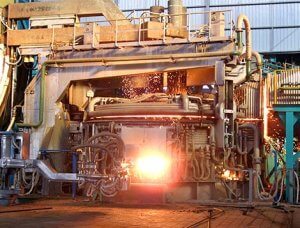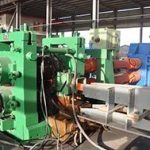The manufacturing industry, particularly in the realm of steel production, has witnessed significant advancements over the years. Among these, the bar mill process stands out as a crucial aspect in the production of steel bars. This intricate procedure leverages advanced technology to transform raw steel into finished products that cater to various industrial needs.
At the heart of the bar mill process lies the steel rolling mill, a facility where the magic of transformation unfolds. These mills are equipped with sophisticated machinery designed to handle the rigorous demands of steel production. One of the most pivotal pieces of equipment within these mills is the bar rolling machine. This machine plays a vital role in shaping and sizing the steel billets into the desired bar dimensions.
The bar mill process begins with the preparation of raw materials, typically steel billets, which are inspected for quality before being heated in a furnace to a specific temperature. This heating process makes the steel plastic and ready for deformation. Once heated, the billets are fed into the bar rolling machine, which applies compressive force to gradually reduce their cross-sectional area while lengthening them. This process, known as rolling, not only achieves the desired shape and size but also enhances the mechanical properties of the steel bars by refining their grain structure.
The bar rolling machine itself is a marvel of engineering, featuring multiple rolling stands arranged in a series. Each stand comprises pairs of rolls that rotate in opposite directions, exerting the necessary force to shape the steel. The design and configuration of these rolls are meticulously calculated to ensure precision in the final product. Furthermore, the process often incorporates cooling and cutting stages, where the rolled bars are cooled in a water or air cooling bed and then cut into the desired lengths using a cutting machine.
In addition to the mechanical aspects, the bar mill process also involves rigorous quality control measures. Throughout the production process, inspections are conducted to ensure that the bars meet the required specifications. This includes testing of mechanical properties and dimensional checks to guarantee consistency and reliability.
Moreover, advancements in technology have led to the development of more efficient and sustainable bar mill processes. For instance, the integration of automation and robotics has improved the precision and productivity of the rolling machines. Additionally, the use of energy-efficient equipment and practices has reduced the environmental impact of the process.
In conclusion, the bar mill process, facilitated by the steel rolling mill and the bar rolling machine, represents a pinnacle of technological achievement in the steel industry. This process not only meets the growing demand for high-quality steel bars but also demonstrates the industry’s commitment to innovation, efficiency, and sustainability. As technology continues to evolve, the bar mill process will undoubtedly undergo further refinements, driving the steel industry towards even greater heights of productivity and environmental responsibility.




